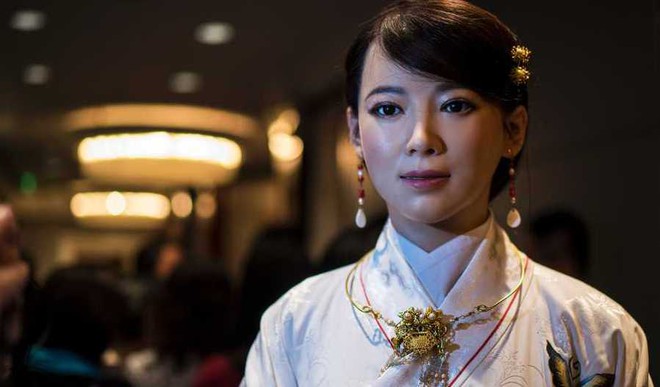In a groundbreaking revelation, the University of Science and Technology of China (USTC) in Hefei, the capital of east China’s Anhui Province, recently introduced Jia Jia, a female robot that remarkably mirrors the appearance of a real woman. This unveiling marks a significant leap in the field of robotics, particularly in creating robots that closely emulate the human form and behavior.

Jia Jia’s striking resemblance to a real woman is a testament to the meticulous efforts invested in her design. Constructed with skin made from silica, her “face” draws inspiration from the features of five students at the university. The choice of silica as a material not only enhances the robot’s aesthetic appeal but also contributes to a lifelike texture, making Jia Jia’s appearance eerily authentic.

Beyond its physical attributes, Jia Jia boasts an impressive array of interactive features. The robot exhibits the ability to nod, blink its eyes, and move its hands with a level of dexterity that adds to its human-like charm. What sets Jia Jia apart is its advanced capacity to recognize its owner’s voice and engage in meaningful conversation. This level of responsiveness pushes the boundaries of what we traditionally associate with robots, ushering in a new era of interactive robotics.
The incorporation of silica into Jia Jia’s design is a strategic choice that goes beyond visual aesthetics. Silica’s flexibility and durability make it an ideal material for crafting a robot that not only looks convincing but also feels realistic to the touch. This intentional use of material aligns with the broader objective of creating robots that seamlessly integrate into human environments, blurring the lines between the artificial and the authentic.
The unveiling of Jia Jia prompts contemplation on the future implications of robots that closely mimic human appearance and behavior. The prospect of robots indistinguishable from real humans raises intriguing questions about their role in society. From personal assistants to companionship for those seeking technological interactions, the applications of such lifelike robots are diverse and far-reaching.

As we witness the evolution of robotics with creations like Jia Jia, ethical considerations come to the forefront. The development of robots that are remarkably human-like prompts reflection on the potential impact on societal norms, interpersonal relationships, and the ethical responsibilities of those pioneering these technological advancements. The blurring boundaries between humans and robots necessitate careful consideration of the implications of such innovations. In conclusion, the unveiling of Jia Jia by the University of Science and Technology of China represents a remarkable milestone in the realm of robotics. The fusion of lifelike physical attributes and advanced interactive features propels us into an era where robots can closely emulate human behaviors. As we navigate this new frontier, ethical considerations will play a pivotal role in shaping the responsible integration of such robots into our daily lives.

